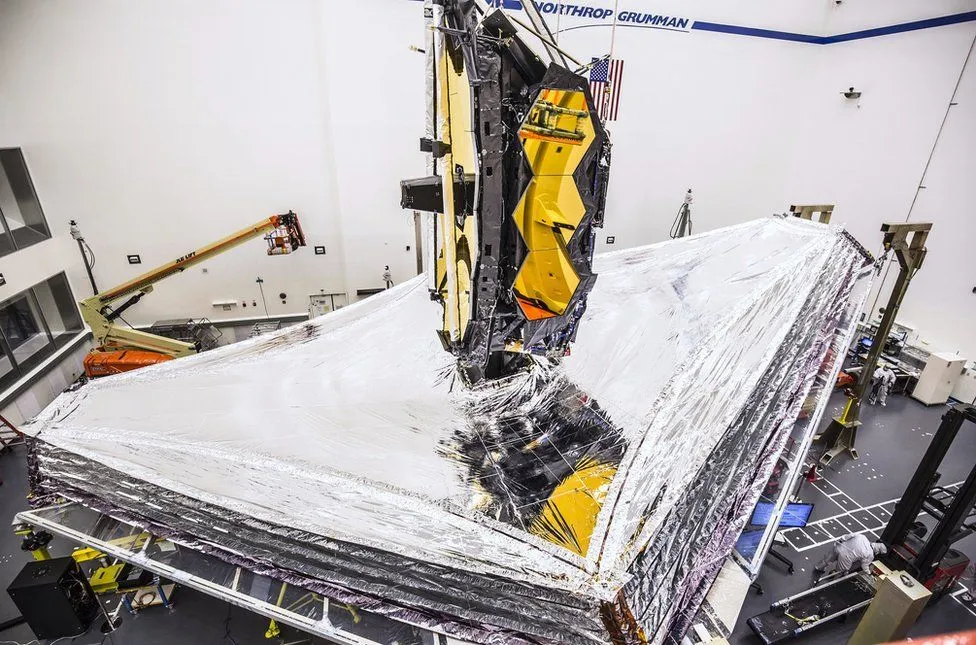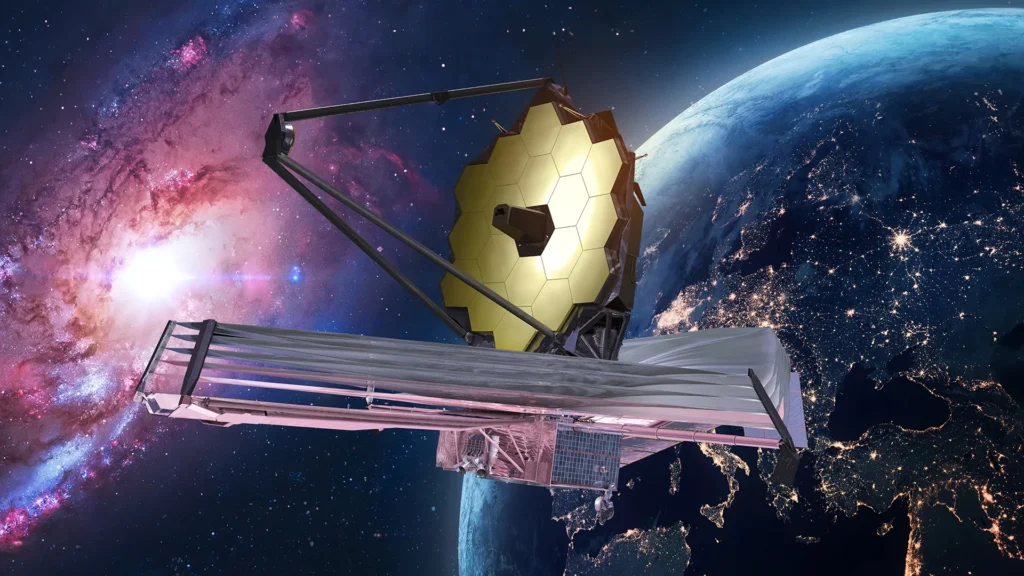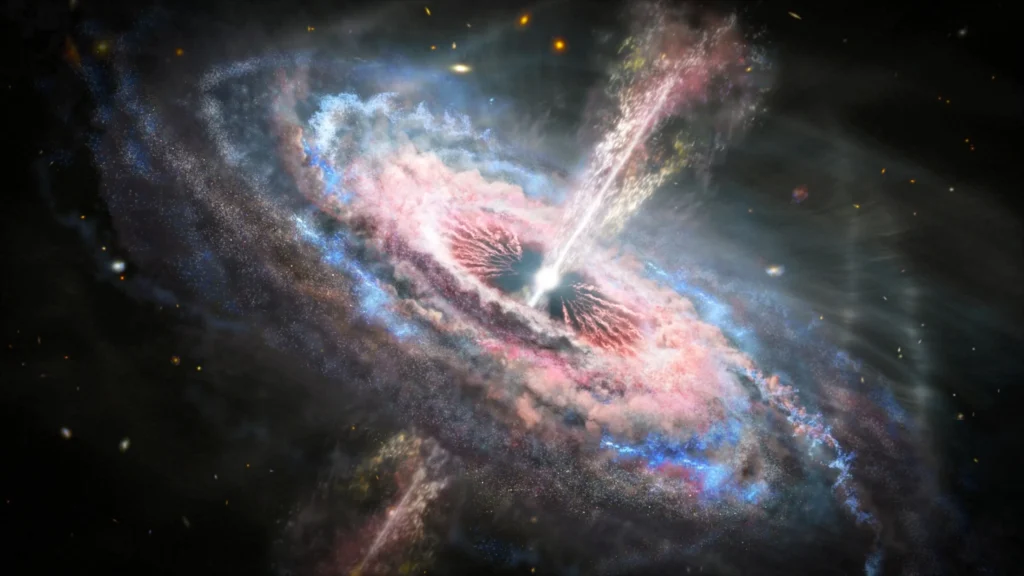The Webb James Telescope, also known as the James Webb Space Telescope or Webb, is a large infrared telescope that was launched on December 25, 2021. It is the successor of the Hubble Space Telescope, and the most powerful and complex space observatory ever built.
Webb’s main goals
Webb’s main goals are to study the origins and evolution of the universe, from the first stars and galaxies that formed after the Big Bang, to the formation and diversity of planetary systems, to the origins of life and habitability. Webb will also observe objects in our own solar system, such as planets, moons, asteroids, and comets.
The Design and Features of Webb’s Mirror and Sunshield
Webb has a 6.5-meter primary mirror, which is composed of 18 hexagonal segments that unfold and align in space. The mirror is coated with a thin layer of gold to reflect infrared light. Webb also has a 5-layer sunshield, which is the size of a tennis court, that protects the telescope from the heat and light of the Sun, Earth, and Moon.
The sunshield creates a cold and stable environment for the telescope and its four scientific instruments.
Webb’s four instruments

Webb’s four instruments are: the Near-Infrared Camera (NIRCam), which takes sharp images and studies the formation of stars, galaxies, and exoplanets; the Near-Infrared Spectrograph (NIRSpec), which will analyze the spectra of hundreds of objects at once and measure their chemical and physical properties; the Mid-Infrared Instrument (MIRI), which will observe faint and distant objects in the mid-infrared range and study the early universe, dust, and ice; and the Fine Guidance Sensor/Near-Infrared Imager and Slitless Spectrograph (FGS/NIRISS), which will provide precise pointing and guidance for the telescope and perform high-contrast imaging and spectroscopy of exoplanets.
Webb’s Orbit and Communication
Webb does not orbit around the Earth like the Hubble Space Telescope, but orbits the Sun at a distance of 1.5 million kilometers (1 million miles) from the Earth, at a point called the second Lagrange point or L2. This location allows Webb to have a clear view of the sky and avoid the interference of the Earth’s atmosphere and infrared radiation. Webb will communicate with the Earth through a high-gain antenna and a low-gain antenna and will receive commands and send data through the Deep Space Network.
The History and Cost of the Webb Telescope

Webb is a joint project of NASA, the European Space Agency (ESA), and the Canadian Space Agency (CSA). It is named after James E. Webb, who was the administrator of NASA from 1961 to 1968 and played a key role in the Apollo program. Webb’s development and construction took more than two decades and faced many technical and budgetary challenges. Webb’s total cost is estimated at about $10 billion.
Webb’s Mission Duration and Science Programs
Webb is expected to operate for at least five years, with a goal of 10 years. It will conduct a series of observations and science programs, some of which were selected through a competitive process, and some of which are part of the Guaranteed Time Observations (GTO) and the Early Release Science (ERS) programs. Webb will also have a Director’s Discretionary Time (DDT) program, which will allow the telescope to respond to unexpected or urgent scientific opportunities.
How Webb Will Uncover the Secrets of the Cosmos

Webb is a groundbreaking and ambitious mission that will revolutionize our understanding of the cosmos and our place in it. It will reveal new and exciting discoveries and inspire future generations of astronomers and explorers.
must watch the video about: The Webb James Telescope
conclusion
To sum up, the James Webb Space Telescope is an incredible piece of science that will usher in a new age of astronomical research. Thanks to its exceptional infrared vision, we can see how stars and galaxies originate, explore the secrets of exoplanets, and see into the oldest light in the cosmos. With every breathtaking picture and ground-breaking discovery, Webb transforms our textbooks and our conception of the universe. It is both a monument to our achievement and a lighthouse of our unquenchable curiosity in the great mysteries of the cosmos. Webb’s astronomical research promises to reveal many mysteries as it moves forward, leaving us to consider our role in this enormous and constantly changing cosmic fabric. There are countless possibilities on this voyage ahead, and the cosmos could contain mysteries that are beyond human comprehension.

